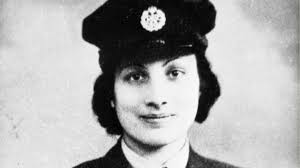
Noor
Noor Inayat Khan was born on January 1, 1914, in a world that was quickly becoming turbulent. Her birth took place in Moscow, Russia, to a family rich in cultural and spiritual heritage. Her father, Hazrat Inayat Khan, was a renowned Indian Sufi master and musician, while her mother, Ora Ray Baker, was an American from Albuquerque, New Mexico. The family moved frequently during Noor’s early years, living in London and then settling in Paris. Noor grew up in an atmosphere steeped in music, literature, and Sufi teachings, which emphasized the oneness of humanity and the importance of love and compassion.
Education and Early Influences
Noor’s education was diverse, reflecting the international and intellectual environment she was raised in. She attended the École Normale de Musique in Paris, where she studied child psychology and music. Noor was also a writer and contributed regularly to children’s magazines. In 1939, she published her book “Twenty Jataka Tales,” a collection of stories from Indian folklore.
Her father’s teachings left a lasting impact on her. The principles of non-violence, tolerance, and self-sacrifice were deeply ingrained in her character. Yet, as World War II loomed, Noor found herself at a crossroads. The very principles she held dear were being trampled by the forces of fascism sweeping across Europe.
The Outbreak of War
When the German forces invaded France in 1940, Noor’s family fled to England. Despite her pacifist upbringing, Noor felt compelled to take action against the Nazis. She believed that to preserve the values of freedom and justice, it was necessary to stand up and fight. In 1940, Noor joined the Women’s Auxiliary Air Force (WAAF) as a wireless operator. Her linguistic skills and her ability to operate a wireless set with precision caught the attention of the Special Operations Executive (SOE), a secret organization set up by Winston Churchill to conduct espionage, sabotage, and reconnaissance in occupied Europe.
Training and Deployment
Noor’s recruitment into the SOE marked the beginning of a journey that would test her courage, resilience, and resolve. The training was rigorous and demanding. She had to master skills such as unarmed combat, survival techniques, and clandestine communication. Despite initial doubts from her trainers about her suitability for the role—due to her gentle demeanor and spiritual background—Noor excelled in her training.
In June 1943, Noor was given the code name “Madeleine” and was sent to Paris as part of the Prosper resistance network. Her mission was incredibly perilous. Wireless operators were essential to the success of resistance operations, but they were also highly vulnerable. The Gestapo was skilled at triangulating the locations of wireless transmissions, making it one of the most dangerous jobs in the resistance.
Life in the Shadows
Upon arriving in Paris, Noor quickly integrated into her role. The city’s beauty and charm belied the constant danger that lurked around every corner. The Gestapo was relentless in its efforts to root out resistance members, and the risk of betrayal was ever-present. Noor’s network was compromised soon after her arrival, but she refused to abandon her mission. She moved constantly, changing her appearance and her location to avoid detection, and continued to transmit vital information back to London.
Noor’s bravery was matched by her resourcefulness. Despite the enormous pressure, she maintained her composure and managed to evade capture longer than anyone expected. Her transmissions were a lifeline for the SOE, providing crucial intelligence that helped coordinate resistance efforts and prepare for the Allied invasion.
Betrayal and Capture
Noor’s remarkable ability to stay one step ahead of the Gestapo came to an end in October 1943. She was betrayed by a French double agent, leading to her capture. The Gestapo interrogated her extensively, hoping to extract information about the resistance network. Despite enduring brutal torture, Noor remained steadfast and did not betray her comrades. Her silence was a testament to her extraordinary courage and her unwavering commitment to the cause of freedom.
Imprisoned in solitary confinement at the Gestapo headquarters in Paris, Noor made several daring attempts to escape, showcasing her indomitable spirit. In one attempt, she managed to climb onto the roof but was recaptured before she could make her way to freedom. Her resilience in the face of such dire circumstances was nothing short of heroic.
The Final Sacrifice
In November 1943, Noor was transferred to the notorious Pforzheim prison in Germany, where she was classified as “highly dangerous” and kept in chains. Even in these dire conditions, her spirit remained unbroken. Her fellow prisoners later recounted her bravery and her ability to maintain hope and dignity despite the harsh treatment she endured.
On September 13, 1944, Noor Inayat Khan was transported to the Dachau concentration camp. Along with three other female SOE agents, she was executed. Witnesses reported that her final word was “Liberté”—Freedom. Noor’s sacrifice was the ultimate act of defiance against the tyranny she fought so valiantly to oppose.
Legacy and Recognition
Noor Inayat Khan’s story is one of extraordinary bravery, resilience, and self-sacrifice. Her contributions to the Allied war effort were significant, yet her name remains relatively unknown compared to other war heroes. In recognition of her courage and dedication, she was posthumously awarded the George Cross, one of the highest British honors for gallantry. In France, she was awarded the Croix de Guerre with a silver star.
In recent years, efforts have been made to ensure Noor’s legacy is remembered. In 2012, a memorial statue was unveiled in London’s Gordon Square Gardens, the first stand-alone memorial to an Asian woman in the UK. The statue serves as a reminder of her remarkable life and the values she stood for.
Noor’s story has also been the subject of books, documentaries, and films, bringing her heroic deeds to a wider audience. Her life is a testament to the power of courage and conviction in the face of overwhelming odds. She exemplifies the spirit of resistance and the enduring fight for freedom and justice.
Conclusion
Noor Inayat Khan’s life and legacy offer profound lessons in courage, resilience, and the importance of standing up for what is right. Her story is not just a tale of wartime heroism but a timeless reminder of the impact one individual can have in the struggle against oppression. Despite the darkness that surrounded her, Noor’s light shone brightly, illuminating the path of resistance and sacrifice.
In honoring Noor Inayat Khan, we recognize not only her contributions but also the countless unsung heroes who fought and continue to fight for a better world. Her legacy challenges us to remember those whose bravery may not always be visible but whose actions shape the course of history. Noor’s life is a beacon of hope and a call to action, reminding us that the fight for liberty and justice is never in vain.
By: Archana S
Write and Win: Participate in Creative writing Contest & International Essay Contest and win fabulous prizes.


